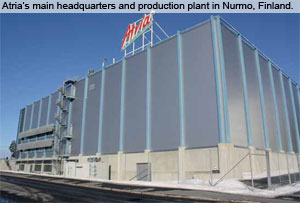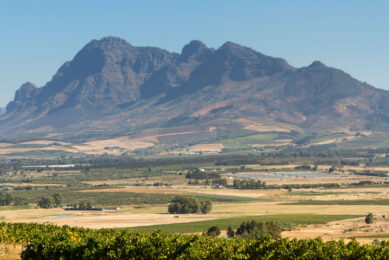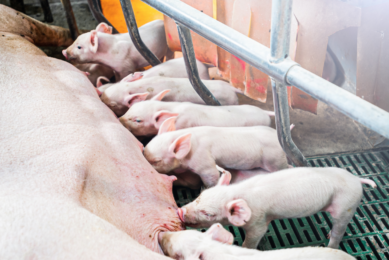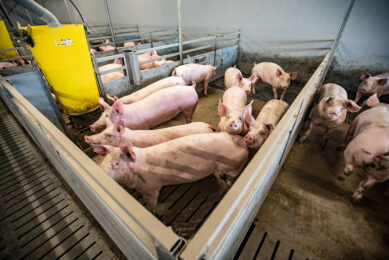Why Finnish Atria can make it in Russia

In the large queue of companies attempting to get a piece of cake of the Russian market, the Finnish pork integrator has successfully entered the market in nearby St Petersburg. At the moment, vast pig complexes are being built to supply the market of 16-million-head in the capital Moscow. The Finnish are determined to succeed.
“Our strategy and vision for Russia is very clear: We want to be one of the leading meat processing companies in the European part of Russia. West of the Ural Mountains, there are 100 million people. Compare this to Finland, where 5 million people live. That is the reason why we are there.”
Juha Ruohola, executive vice president, Atria Russia, couldn’t be clearer about his company’s objectives on the Russian market. Nurmo, Finland-headquartered Atria, was established in 1994 after a merger of various Finish beef, poultry and pig cooperatives that had been working together for many years. With history dating back to 1903, it is now ready to spread its wings big time.First steps have already been made, Ruohola explains, as Atria successfully obtained about 20% (in value) of the current meat products market in Russia’s second-biggest city, St Petersburg, located closely to the Finnish-Russian border and having 5 million inhabitants. The company made its entry in the autumn of 2005, by acquiring 100% of the shares of the family-owned sausage and meat business OOO Pit-Product. Together with the acquisition Atria got a sausage factory in the city of Sinyavino near Lake Ladoga, replacing the original plant in central St Petersburg. An additional new, greenfield plant for Pit-Product is also being constructed, total costs involving €70 million; this plant will be fully operational in May 2010.
Moscow market
The success of the strategy in St Petersburg made Atria Russia believe that with a clear focus the company could also successfully enter the Moscow market – a market three times as large as St Petersburg, making it Europe’s number one city. A strong position on this market would create big business.
Ruohola says, “The Moscow market is a very mature market. It would be impossible to create new market possibilities with organic growth. We had to enter Moscow through an acquisition – and we did by acquiring Kampomos, from Spanish Campofrío.” The facility, located near Moscow, was the first western meat processing company in Russia, established in 1989. It produces e.g. frankfurter sausages and pizzas and does its own deboning.
This transaction took place in the autumn of 2008, initiating another wave of investments around the Russian capital. A full-scale vertical pig business is now being created in which only the slaughtering is being outsourced, Ruohola explains. In total three locations were chosen to invest in pig production:
- The first farm is located in Zaraisk, at 150 km South East of Moscow. This greenfield piggery has 2,500 sows. As from February last year, this farm delivers 55,000 pigs/year.
- Secondly, at the end of 2009, Atria Russia announced a common associate project with OOO DanInvest, a Danish owned investment company. Atria owns 26% of the shares in the project, to build a pig farm at 400 km south east of Moscow, near the city of Tambov. Here, about 5,000 sows have to make sure a production of 110,000 pigs can be achieved in 2013.
- The third project, with the same ownership structure, is also coordinated with DanInvest. This will be ready, slightly earlier, in 2012, near the city of Krasnodar, at 1,400 km south of Moscow. Here, an additional 70,000 slaughter pigs/year will be produced.
This makes a total of 235,000 pigs/year. “With three farms, we will already have about 10% of the total production in the whole of Finland,” says Ruohola, putting both the Russian and the Finnish market into perspective. The company plans to purchase all 235,000 pigs/year with market conditions for use in the Moscow plants.
Genetics used on these farms will come from Spain and Germany; for sow breeding, a crossbreed of Large White and Yorkshire will be used; in the male line, the company chose to use Duroc, as these yield proper leg quality and have a lower stress effect than e.g. Piétrain. Feed for the animals will partly be provided by Charoen Pokphand; the Thai pig and poultry integrator is also expanding strongly in the Russian market. Altogether, Atria says these investments makes the company the largest international meat integrator to invest in Russia.
| Atria – more than hundred years in livestock business As a brand, Atria saw the first light in 1994, but the company’s experience dates back more than a 100 years.Its earliest predecessing cooperative, Lihakunta, was founded back in 1903, by producers from eastern and northern Finland. As from the 1980s, Lihakunta increasingly started to work together with two other Finnish cooperatives: Itikka and Osuuskunta, which eventually merged in 1991, three years prior to the name change. On the Finnish pig market, the company operates through its business AtriaSika. The company is Finland’s market leader, as it slaughters about 45% of the about 2.4 million pigs sent to slaughter nationwide each year. This number equals a total of 900 pig farms doing contract production for Atria. The Finnish pork market has become strongly consolidated, since AtriaSika, together with number two, HK Ruokatalo, take care of 85% of the pig market. The company is also strong in cattle (45% of slaughterings) and poultry (40%). Headquarters In 2008, Atria Finland exported products for €49 million. Since there is a strong consciousness about animal welfare, the company emphasises the major role of ‘ethical production and food safety’. Atria says pigs do not live in close confinement, there is a zero-tolerance policy for salmonella in either feed or the pigs themselves, and the company aims to use very little antibiotics and medication. This is possible as the country’s relatively isolated location brings about a low disease prevalence. Due to a Pig Register, traceability is possible from a pork cut back to the farm where the pig used to live. For dam lines, Atria prescribes a cross of Swedish or Finnish Yorkshire with Norwegian Landrace. As a sire, Swedish Hampshire is being used. International operations |
Atria Russia strategy
The strategy to go to Russia is based on three considerations, Ruohola explains. “First, it is difficult to provide fresh meat available to the Russian consumers. With these investments we can, introducing best western genetics and Danish management. With farms in Russia, we can provide high quality meat to Moscow consumers.
“Secondly, it is a matter of risk management for us. The Russian government, in an attempt to protect the Russian market, intends to increase self-sufficiency. At the moment, pork meat self-sufficiency rate is at 75%. For that reason, interest subsidies for investments in own farms is quite good. This is also reflected in increased custom duties and a quota system, which makes importing meat difficult and made many European meat companies suffer. To avoid these risks, we have to be there, have quality raw materials there. “Our third reason comes down to currency risk management. Being in Russia means that our main costs will be in roubles and our sales are in roubles. There is no currency risk. Last year, there was a pretty big devaluation of the rouble. 40% against the euro; 37% against the dollar. In case of a devaluation, we’d have to increase prices by 10%.”
|
Further investments
So far, about €200 million has been invested in the Atria Russia business now since the end of 2005. Now it is time to reap profit from these investments, although Campofrío, the previous owner of Kampomos, faced five years of loss in a row. “We had some bad luck,” Ruohola says. “We bought this in October 2008, right after that the economic crisis began. But we will stay in Russia. The economic crisis won’t disturb our long-term planning.”
A potential next step would be to turn to other cities with millions of people in western Russia, like Kazan, Jekaterinburg, Nizhny Novgorod or Rostov. Ukraine or Belarus could also be options, although Ruohola does not wish to speculate. “Our absolute priority now is to have a turnaround in Moscow. The right order of doing things is very clear. First Moscow, then the regions.”There is confidence, however, that the Finnish company will succeed, where others found it difficult to get hold of market share. Why? The answer lies in history and geography, Ruohola says, as St Petersburg is less than an hour away and Moscow can be reached within one and a half hour. “Finland and Russia are friends. We fought in a couple of wars, that’s true, but in business and in life, we are always friendly. We share a geographical closeness – it’s natural for us to do business.”











